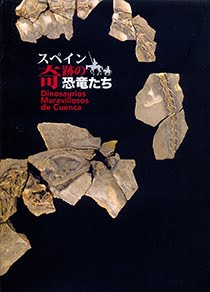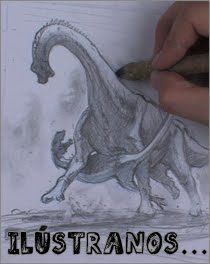Como ya se ha mencionado en otros posts, varios colaboradores de este blog se acercaron al 73rd Annual Meeting de la SVP (Society of Vertebrate Paleontology) que se celebraba este año en Los Ángeles (EEUU) a presentar varios trabajos versados en paleontología de vertebrados. Y los titanosaurios no iban a ser menos, ¡no podían faltar en un congreso de tal envergadura!
En esta ocasión se han presentado los patrones de microdesgaste que aparecen en las facetas apicales de los dientes de los titanosaurios del yacimiento del Cretácico Superior de “Lo Hueco”. Este trabajo confirma la presencia de dos taxones diferentes de titanosaurios en el yacimiento gracias a las divergencias morfológicas encontradas en las coronas de los dientes, y tras el estudio del microdesgaste de las facetas apicales se sugiere que ambos taxones tendrían diferentes dietas.
El resumen del trabajo presentado se detalla a continuación:
The microwear patterns on the apical facet of the sauropod teeth is interesting as a complementary information for the study of diets, and ontogenetic or interespecific niche partitioning. Some wear analyses have been developed for titanosaurian teeth (i.e. in Argentina and southwestern Europe). For the Spanish record, these analyses were carried out on samples from the Laño fossil-site (Condado de Treviño) attributed to the titanosaur Lirainosaurus astibiae. In these samples, teeth interpreted as belonging to adults present a microwear pattern in the apical wear facet with a high ratio of pits, which could be explained by the ingestion of tougher vegetation and/or grit. On the other hand, several teeth from the French fossil-site of Fox-Amphoux-Métisson (département de Var) show an apical wear facet with predominance of scratches, probably because of a diet based on soft vegetation with little ingestion of abrasive dust.
In the Upper Cretaceous fossil-site of “Lo Hueco” (Cuenca, Spain), two different titanosaurian teeth morphotypes are found: a robust one, characterized by asymmetric crowns with an almost D-shaped cross-section; and a slender morphotype, characterized by cylindrical crowns with mesial and distal ridges, and a “lemon-shaped” cross-section. Both morphotypes show different microwear patterns on their apical wear facets. The robust morphotype presents smooth scratches, most oriented subparallel to the apico-basal axis, while the slender morphotype shows a more coarsed pattern, with well-marked scratches ending in deep pits (similar to a “meteor shower”). In this morphotype the scratches are regularly oriented parallel to the apico-basal axis of the apical wear facet. These microwear divergences could be explained as the intake of different diets for both “Lo Hueco” titanosaurian morphotypes.
In addition, microwear patterns and crown morphology of the robust morphotype are similar to that found in teeth from Fox-Amphoux-Métisson (France), but also in the French fossil-site of Massecaps (départment d’Hérault). On the other hand, the general crown morphology of the slender morphotype is fairly similar to the one attributed to Atsinganosaurus velauciensis from Velaux (department de Var, France), but further study of more titanosaurian cranial and postcranial remains from “Lo Hueco” has to be carried out for a more accurate determination of its titanosaurian fauna.
Más información:
- Referencia: Díez Díaz, V., Ortega, F., Sanz, J. (2013). Microwear patterns of the titanosaurian teeth from the Late Cretaceous of “Lo Hueco” (Cuenca, Spain). Abstracts of papers of the 73th Anuual Meeting of the Society of Vertebrate Paleontology: 116.
- Imagen: Póster correspondiente al trabajo presentado.




























No hay comentarios:
Publicar un comentario